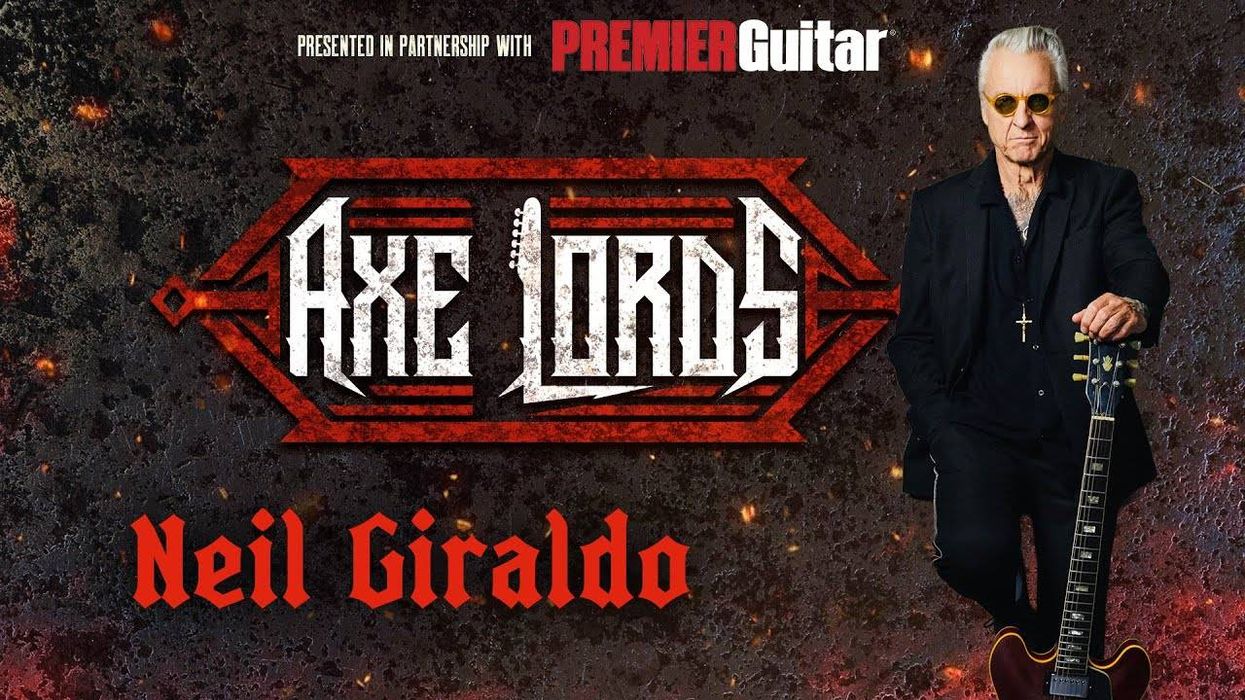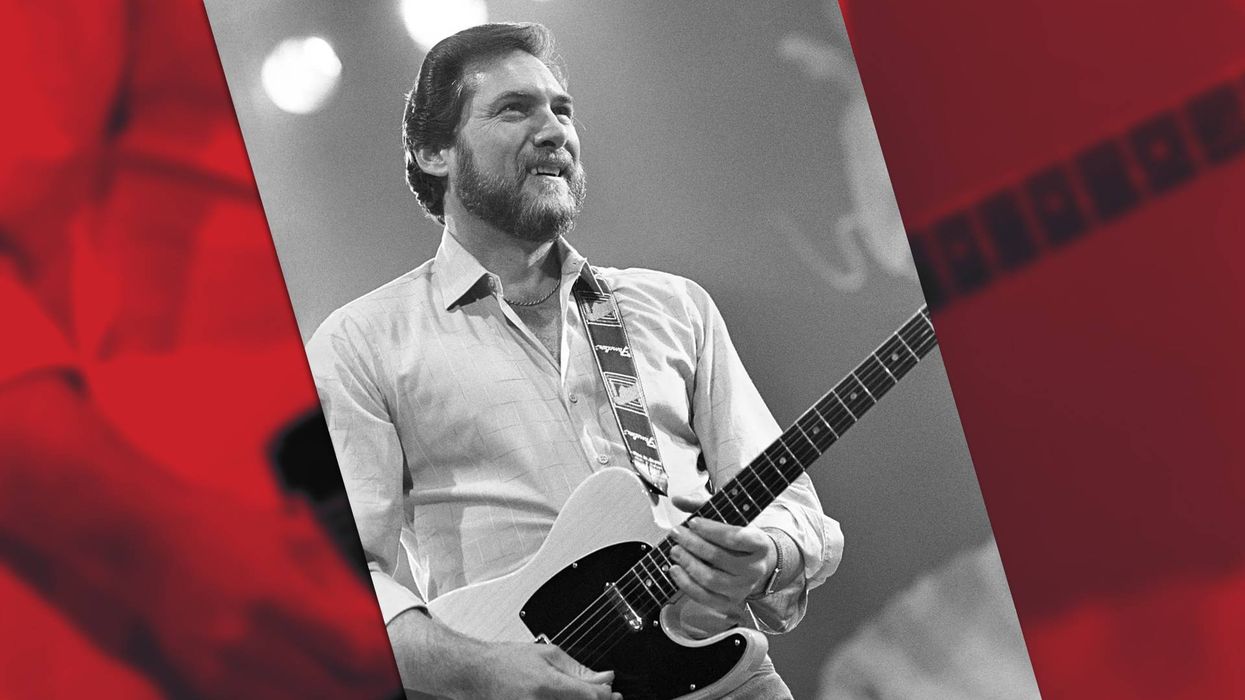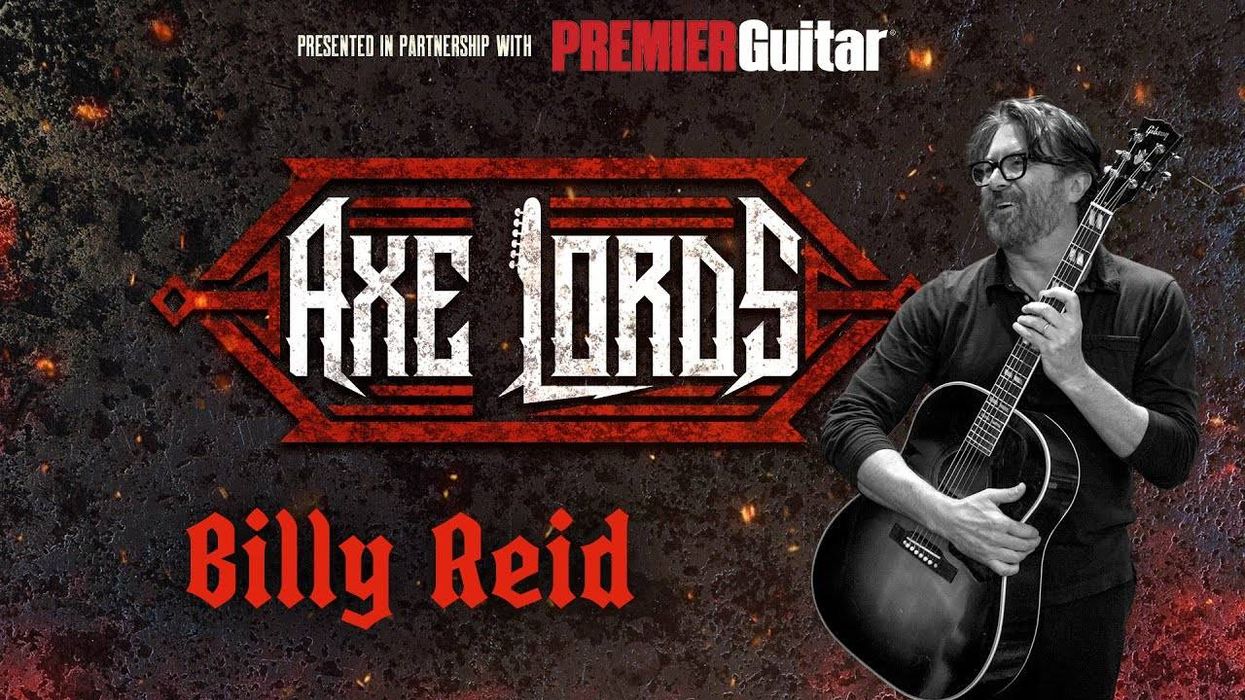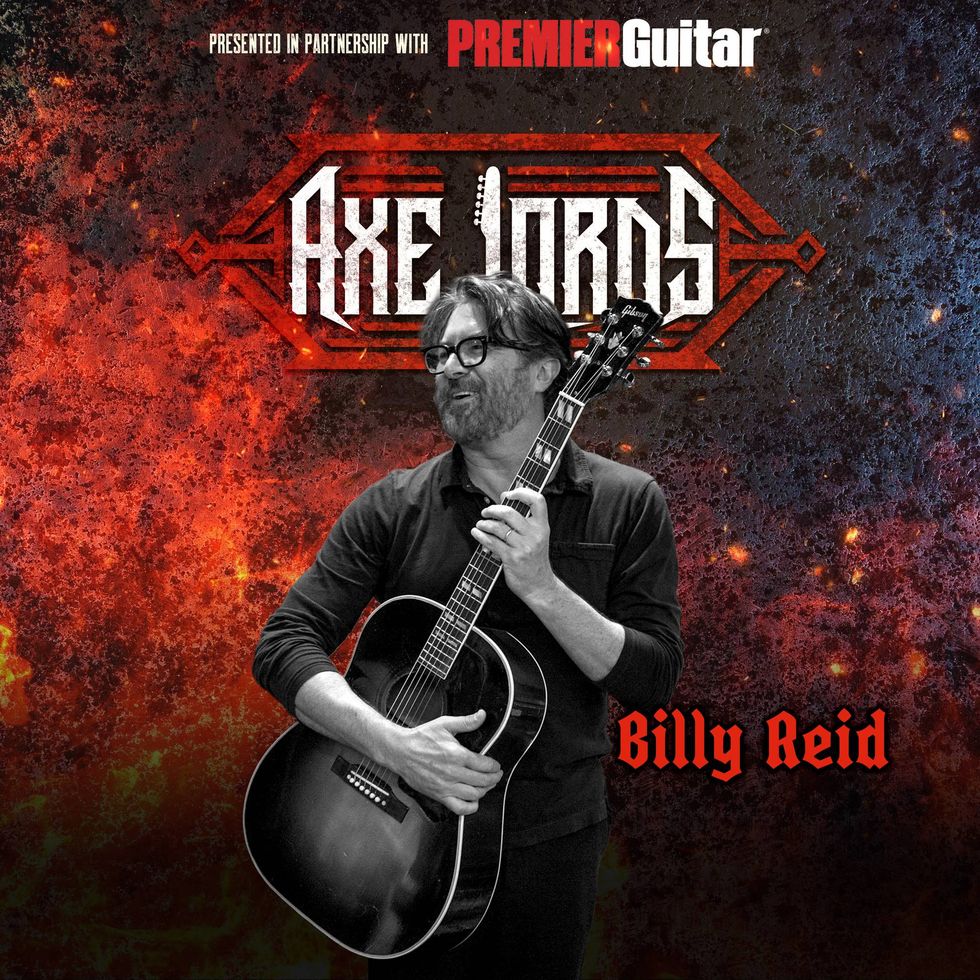Sadie Dupuis has an MFA in poetry from the University of Massachusetts, and she's earned her doctorate in rock 'n' roll onstage with her band Speedy Ortiz and other groups, which makes her part of a long line of rock bards that goes back to Chuck Berry. Although with their grinding guitar rhythms, waves of feedback, and tweaking, angular lead lines, Speedy Ortiz and Dupuis' guitar playing are distinctly modernist.
“I get involved in different projects and I play other instruments," says the activist, writer, and string-slinger, “but guitar is always the one that's the most comfortable and certainly the one that I've spent the most hours on. So, even if I'm recording stuff that I'm going to be playing on synth or a bass, I definitely compose on guitar."
Undeniably, the heart and soul of Speedy Ortiz—from the band's debut EP, 2012's Sports, to 2015's Foil Deer album and 2016's Foiled Again EP—has been Dupuis's singular sonic character. But with the new Twerp Verse, she's added a kindred 6-string spirit in guitarist Andy Molholt, from the band Laser Background. Molholt joined halfway through the recording of Twerp Verse, bringing an ear for ornamentation that made a major impact on many of the album's tunes.
“It's obviously Sadie's songwriting project," says Molholt. “I'm more there to fill in the color spots. And I feel like that's what I was able to do." In fact, he did it so well that Dupuis was inspired to begin planning the next round of recordings for them, even as Speedy Ortiz rides the wave of Twerp Verse.The album found the band expanding its sound with not only a second guitar, but walls of synthesizer. The songs “Lucky 88" and “I'm Blessed" balance the raw attitude of '90s-style guitar tones and production with synth melodies that recall '80s new wave, while simultaneously sounding fresh.
Dupuis has managed to craft a guitar style that is unique and challenging, and she injects Twerp Verse with atonal countermelodies and gritty overdrive textures that sit next to swirling modulations and harmonies that defy expectations. And she does it all while singing earworm pop melodies that often clash head-on with the music in a subdued yet antagonistic fashion.
Her socially-conscious lyrics are also on full display. She sings about the realities of being a woman in today's world with carefully crafted wit that drives her points home, and her wilting, nonchalant vocal delivery wryly weaponizes her lyrics as a rallying cry for the marginalized.
Guitarists often lament the disappearance of the guitar hero and, sometimes, of real rock 'n' roll. But after speaking with Dupuis and Molholt about their latest work, I think that maybe we're just looking in the wrong places. Maybe today's guitar heroes are right under our noses, forging new hybrid sounds and singing about issues more impactful than fashion, material belongings, and a hypersexualized worldview. And maybe two of them just released a fantastic new album called Twerp Verse.
Speedy Ortiz has a unique sound. Describe your musical background and how you arrived at your songwriting style.
Sadie Dupuis: I first started playing music in a classical setting. I had taken piano lessons and sang in children's choirs up until age 16. And if I'm totally honest, I had just seen the Josie and the Pussycats movie and wanted to do that. So I got a Mexican Strat for my 13th birthday and started playing.
I've never heard Josie and the Pussycats play anything like Speedy Ortiz.
Dupuis: I mean, it was a really good movie, okay? [Laughs.] Well, when I first started playing, because my background was singing choral sheet music, I was like, let me learn how to play some of this on guitar. So I think there's always been some of that influence on my playing. A lot of the music I'd sing as a kid was eight-part harmonies that were super weird with time signatures that were changing.
Andy, Twerp Verse is your first album with the band. How did you come to be in Speedy Ortiz?
Andy Molholt: [Drummer] Julian Fader convinced me to join this band called Very Fresh, and we opened for Speedy Ortiz. That's the first time I met them. And then when Devin [McKnight, the previous Speedy Ortiz guitarist] decided not to play with the band anymore, Sadie hit me up saying, “Do you want to play four shows with us? We have one week. You have to learn 16 songs." And I was like, “Sure!" I personally love a challenge like that. The first four shows went really well, and we thought we should keep doing it. It's all really natural.
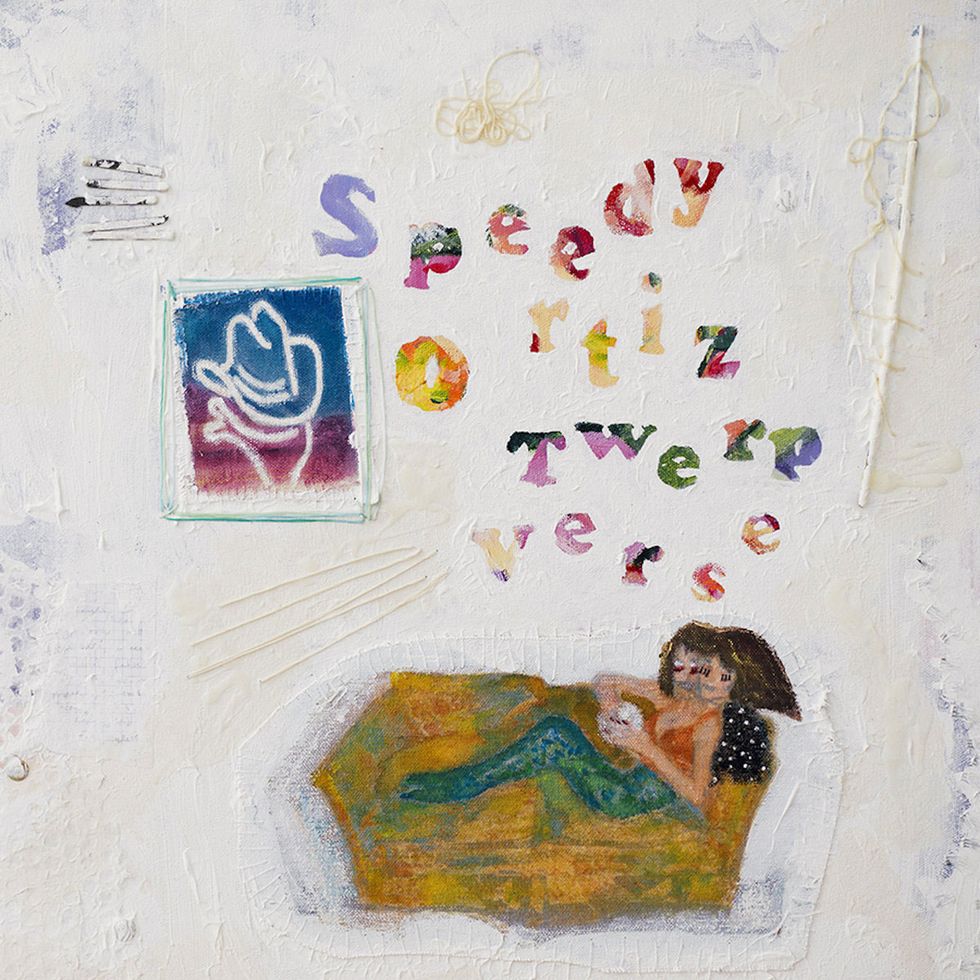
TIDIT: Guitarist Andy Molholt joined the band halfway through the recording sessions for Twerp Verse. He also leads his own group, Laser Background.
How do you see your role within the band?
Molholt: Any time I play in somebody else's project or especially a project that's existed for a while, I'm very intent on adding as much as I can without taking away anything that was already making the project special. And I'm the third guitar player for Speedy Ortiz, so I did feel like I had to fill the role that Matt [Robidoux] and Devin both left behind.
It definitely was a little daunting at first. But Sadie's really good about letting people play something that's very specifically laid out and also color outside the lines a little bit. Like on “Can I Kiss You?" … the main guitar line I'm playing was originally a bass line. But I remodeled it slightly with a Moog ring mod pedal. And on “You Hate the Title," there's a delay guitar part and that was an idea I had to keep the rhythm moving in an interesting way.
That delay has a really smoky sound. What did you use to get that tone?
Molholt: It's a $40 pedal my friend gave me made by this company called Joyo. They're super cheap. So I fell in love with that. I have a Memory Man Deluxe that I really like as well, but I use that for synths, mostly.
The crafty sounds on Twerp Verse require Dupuis and Molholt to do a pedalboard ballet onstage, which means they carefully plan the placement of their effects. Dupuis uses multiple overdrives, while Molholt occasionally shifts to synthesizer. Photo by Dan Locke/Frank White Photo Agency
Sadie, what does Andy bring to the band?
Dupuis: Andy has a really great sense of tone. And he's always saying, “What does the song need?" Sometimes the song just needs a cool sound, and Andy is really great at crafting that. And then sometimes the song needs a super-wild noise, and Andy is also really good at that. It was great to have him on this record. He came in late in the process, so he's only on half the record. But I'm really, really excited to do a whole record together.
Your last album, Foil Deer, was widely acclaimed. How do you feel you've grown as a player and songwriter between that album and now?
Dupuis: Well, certainly I think I'm much better. I think I always get better at playing from record to record. I'm always trying to write a part just slightly harder than I actually know how to play. That way I learn to get better with every record. And having to play live every night while you're also singing and trying to not look like you're freaking out onstage—it really forces you to get better. And, especially with some of the fingerpicking stuff, I have definitely gotten a lot more control over the past couple of years.
What was the recording process like for Twerp Verse?
Molholt: We did most of the principal tracking live. There were a couple songs where we were trying to layer some drum stuff. But most of the songs, we would do at least bass and drums, and maybe a scratch guitar track live, and then go back and overdub.
Dupuis: I'm a pretty neurotic person, and I don't like improvising. I want to plan every note of what I'm going to play. But what I like about when we do track live is, sometimes I'm having fun and I'll play something I didn't see coming. I like when that happens. And also there's just more fluidity to tracking everything live.
The album is full of intricate, angular guitar lines that counter the vocal melody. How did you teach yourself to do both at the same time?
Dupuis: It's a pain in the ass! In the months following the record, up until the tour, I'll be sitting there with the guitar parts, realizing that the vocal is near impossible to do while playing. It's a very slow and embarrassing process. And sometimes I do wind up having to slightly change a part. On “Lucky 88," there are some rhythms and notes that are clashing with the vocal melody. That works in the track because it's mixed well, but live it would be ridiculous. So I'll just change it very slightly.
Molholt: Every time I play in somebody else's project, it's like learning their brain. And I feel like Sadie's brain is particularly labyrinthine. If something repeats, it's usually slightly different or there's a lot of moments that happen once in the song and then never happen again. It's like I learned a new operating system or something.
On top of singing and playing these involved guitar lines, you're also controlling a pretty involved pedalboard.
Dupuis: Yeah. I'm definitely always thinking of the way that I have my pedalboard laid out. I need it in such a way that it's easy for me to deal with without having to think too hard. Especially because I'm not a graceful person. I'm very clumsy. I'm highly inclined to hit the wrong thing, and there's a lot of pedals packed pretty tightly onto my board.
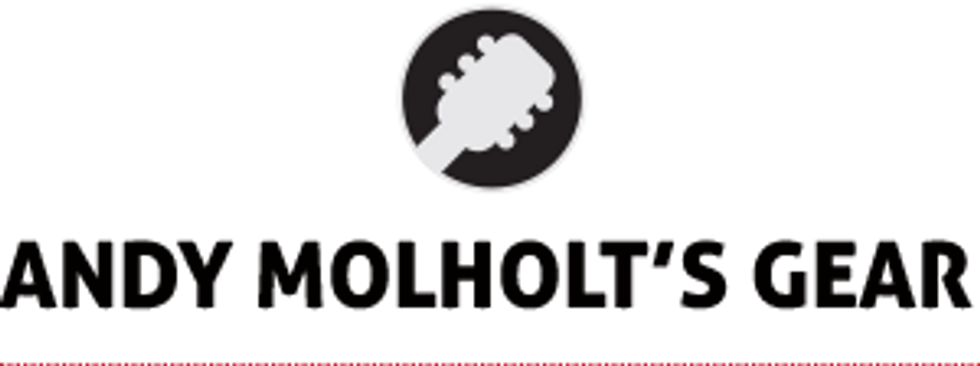
Guitars
Fender Jaguar
Amps
1966 Fender Bassman head
2x12 cab
Effects
Paul Cochrane Timmy overdrive
Fulltone OCD
Analog Man Bi-Chorus
EarthQuaker Devices Bit Commander
Electro-Harmonix Soul Food overdrive
TC Electronic Hall of Fame reverb
Joyo JF-33 Analog Delay
Moog MF-102 Ring Modulator
Strings and Picks
Pyramid Gold Flatwounds (.010–.0465)
You use many of those pedals to cover synth parts from the album on your guitar. Why not just play synth?
Dupuis: I did a solo project two years ago where I was playing synth and guitar and also controlling tracks. It was too much. I hated it and I felt like I was in a cage of gear onstage. So when we were getting ready to tour this record, I was like, “I really cannot be bothered to be setting up the synths and the guitars every night." Now, I'm basically playing all the synth parts on guitar, and Andy does some of the synth parts on actual synth. On a lot of the record, I barely play guitar. On “Lucky 88," for example, I'm mostly playing synth the entire time. But live I'm not going to not play for two-thirds of the song.
Andy, you often play both synth and guitar live. How do you balance those roles in the band?
Molholt: I do play synth occasionally. It's very natural to me because I am also a keyboard player. So that was an easy role for me to step into. One thing that I'm working on doing is using a MIDI foot controller and a sampling keyboard. We want to try having it trigger synth chords or little synth lines while I'm playing guitar, because there are some moments in the album that four people really can't do. We want to keep trying to push our limits and I'm always into that.
What gear do you use to get those sounds?
Molholt: My favorite overdrive pedal that I own is the Timmy. But for Speedy, I've actually been using the OCD as well, because it works a little better. And then I have the Bit Commander and the Analog Man Bi-Chorus, which I'm obsessed with. I love that thing. You can make it really subtle or really pronounced depending on the situation. I have an Electro-Harmonix Soul Food I use as a boost. And then I have that shitty delay pedal that I love and the TC Electronic Hall of Fame reverb.
Dupuis: My main squeezes, or anything I'm triggering all the time, I center those on the board, up front. My main overdrive is an EarthQuaker Dunes. I'm basically hitting that any time I'm playing any lead part or chorus. And there's also a Pitch Bay from EarthQuaker, which is a harmonizer pedal and overdrive. I use that for synth parts from earlier records. It's a spacey sound, but still pretty driven. I guess it's only EarthQuaker up front. [Laughs.] I use their Sea Machine chorus pedal when there are quieter moments that I want to stick out more. And then I use an Old Blood Noise Endeavors pedal. It's an oil can delay called the Black Fountain. I use that for solos and stuff like that. And that's my stuff upfront. And then I have a whole chain of stuff in the back that's pretty much on all the time. I use a Catalinbread Callisto pedal, too, and an EarthQuaker Monarch overdrive. Those pedals are always engaged. That's my clean tone. And I switched to a new amp that I'm obsessed with. It's a Divided By 13. I have their CJ 11—I love it! There's treble and bass, and there's volume and master volume. And that's all it's got.
Pony up: Leading Speedy Ortiz's sonic strategy, Sadie Dupuis and Andy Molholt create a quick-cut aural landscape full of purposeful buzzes and rattles. It's a smart modernist approach that gives Dupuis' deceptive pop melodies a jagged edge. Photo by Shervin Lainez
You use an overdrive for your clean tone?
Dupuis: Well, it's the Monarch, which is a pedal they use to simulate the sound of Orange amps. I don't have it turned up. It's clean, but a little gritty. It's like if I had the drive engaged on my amp. It makes it so the clean tone isn't too clean.
Andy, are you also running Divided By 13 amps?
Molholt: I guess I'm a Fender guy. I had a 1967 Champ and a '66 Bassman. I used both of those on the record, and I've been taking the Bassman with me live. If I blend the EQ the correct way, it just has this punch to it that I really, really like. And it breaks up nicely.
Sadie, you're often seen with a custom pink guitar. Tell us about that guitar and any others you're playing these days.
Dupuis: The first couple of years I was playing a Jazzmaster that was a '93 made in Japan. And then an olympic white American Strat from 1980, I think. But I haven't been playing those lately. I've used a PRS Mira [Semi-Hollow] for a couple years that I really like. I also have that custom guitar from Moniker.
It's a semi-hollow guitar and the body is called Anastasia. A lot of the custom stuff is aesthetic, like the shell pink and all these different details. The headstock has my other project's [Sad13] logo on it and a crescent moon cutout. And then, pickups-wise, I did a weird thing where it's humbuckers and then a single coil in the middle. It's got Lollars and Seymour Duncans. I switch between those two guitars live at this point.
Is that the same gear you used in the studio?
Dupuis: No. In the studio, I would solely use the PRS, different pedals, and a few different amps. I didn't have the Divided By 13 yet. I wish I did, because I love it. I used some different amps that they had in the studio. But I definitely use my [Fender] DeVille on a lot of the record. And two pedals that I used a lot on the album are not on my board right now. But they're both also from EarthQuaker. It's the Bit Commander and their Rainbow Machine. You can hear that a lot—especially on the synth.
Molholt: I played a Fender Jaguar and I think I also might've played a Stratocaster. I don't think I played anything else on the record.
Are they stock?
Molholt: The Strat was Sadie's. The Jaguar is mine, and I left it pretty much stock. I also play a 1957 Silvertone that I really like. But it definitely is more of a beater.

Guitars
PRS Mira Semi-Hollow
Custom Moniker Anastasia with Seymour Duncan and Lollar HSH pickups
Amps
Fender Hot Rod DeVille (studio)
Divided By 13 CJ 11 (live)
Effects
EarthQuaker Dunes overdrive
EarthQuaker Monarch overdrive
EarthQuaker Bit Commander analog octave synth
EarthQuaker Rainbow Machine pitch shifter
EarthQuaker Pitch Bay harmonizer
EarthQuaker Sea Machine chorus
Old Blood Noise Endeavors Black Fountain delay
Catalinbread Callisto chorus/vibrato
Strings and Picks
Ernie Ball Coated Slinky (.009–.042)
Dupuis: Oh, and this is pretty cool. I hosted an event at Sonos right before we left on tour. There was basically a panel and workshop with different women who work in audio engineering. So we had Emily Lazar come do the mastering workshop and someone from the Bowery Ballroom came and did a live sound workshop. And someone from Death By Audio showed their Fuzz War pedal, which was actually my first fuzz pedal 10 years ago. She's skinned it to look like the cover of Twerp Verse. So I have a custom Death By Audio Fuzz War that looks like our own cover.
You have an affinity for using gear from companies with women engineers, designers, or builders—such as Death By Audio and EarthQuaker Devices. Let's talk about that.
Dupuis: Women are so under-represented in professional audio. I think the statistic that I always read is that we comprise two percent of it. And that's basically in all corners. So where it's possible, yeah, I like to. I would say that there are fewer women guitarists than men, but we're better represented than people who are working in the more technical side of audio. I like Frantone as well, and Devi Ever, of course. I use Frantone's Brooklyn Overdrive. I have that with me. But I don't have her Cream Puff. It's a joke that I don't own any fuzz pedals, but I have 30 overdrive pedals.
You're both well known for keeping plenty of irons in the fire. So what's next for you guys and Speedy Ortiz?
Molholt: We've got some more touring planned for the rest of the fall into the winter. Sadie and I have briefly spoken about making something else together and the only word we kept using to describe what we want to do is “heavy." I'm very into that, because I really want to do a deep dive into the world of fuzz pedals.
Dupuis: I don't really know, because I can't write on the road at all. But I do think we are ready to make a really heavy album next, because this one is a little poppy. So that's my blanket statement for now.
“Buck Me Off," from Twerp Verse, gets the full live treatment from Speedy Ortiz on the University of North Carolina's radio station. You can hear a fleet of effects pitch-shifting and sputtering under Sadie Dupuis' candy-coated vocal melody. She plays her Moniker Anastasia while Andy Molholt doubles on Fender Jaguar and synthesizer.




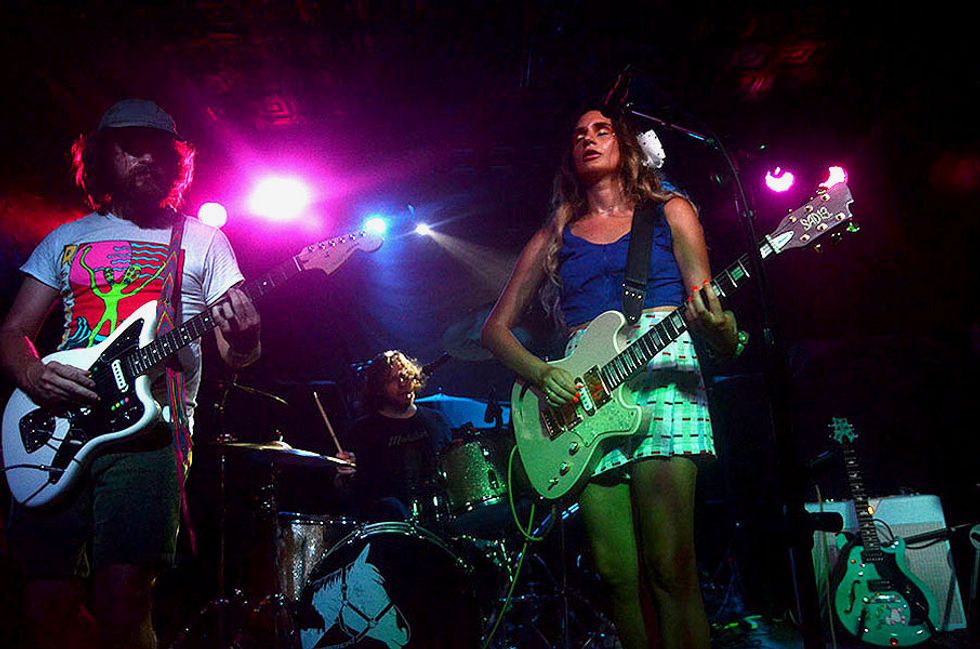






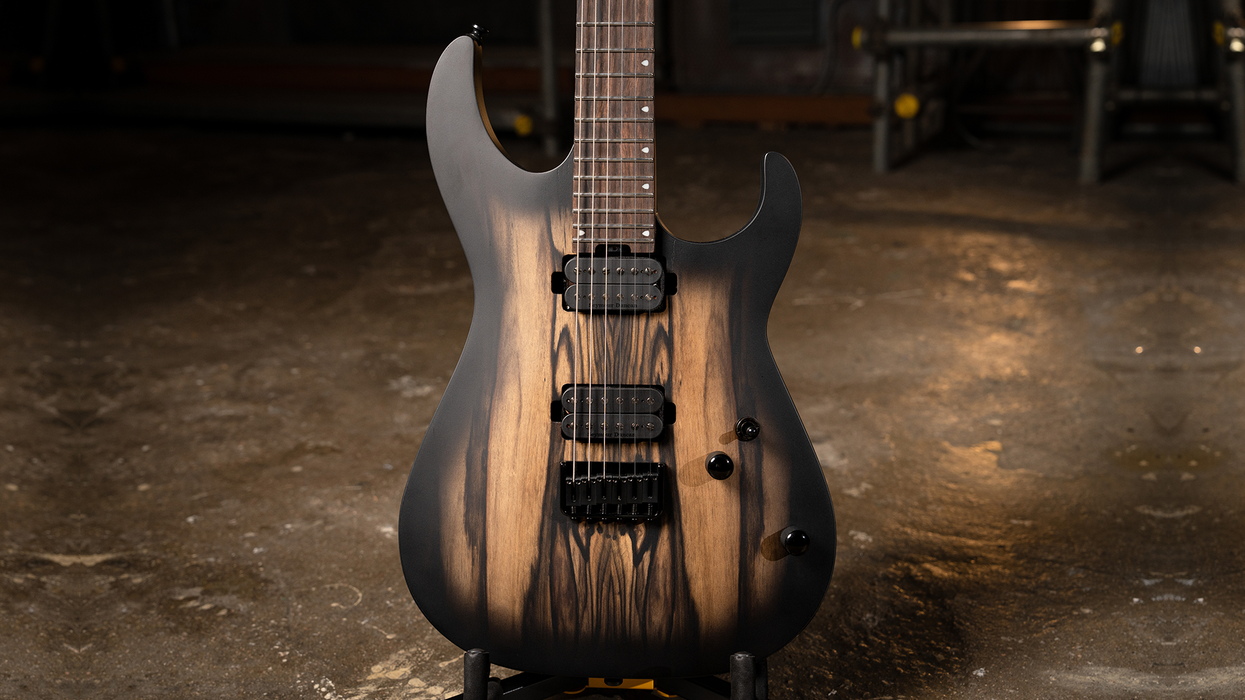



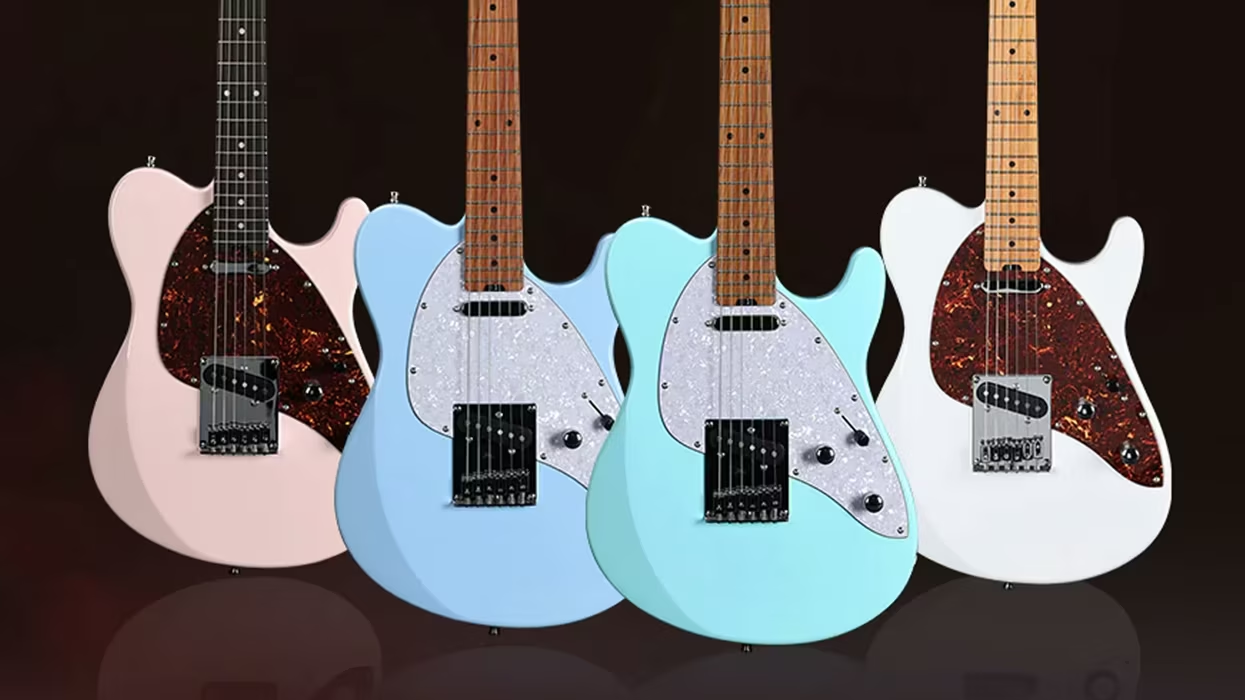
![Rig Rundown: Russian Circles’ Mike Sullivan [2025]](https://www.premierguitar.com/media-library/youtube.jpg?id=62303631&width=1245&height=700&quality=70&coordinates=0%2C0%2C0%2C0)
